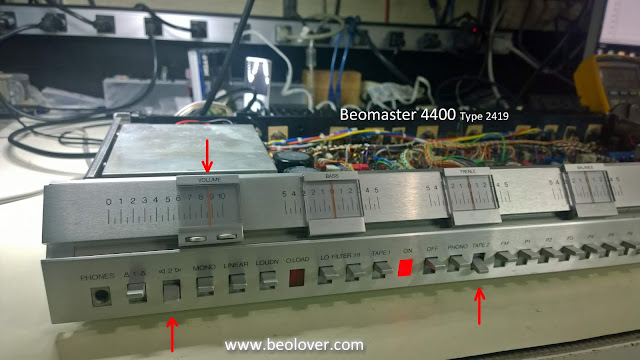Now it is time to see how the Beomaster does when full output power is requested.
First the test setup. My source input voltage is a 1KHz sine wave at 2Vp-p into the Beomaster 4400 Tape 2 DIN plug.
The output of the Beomaster will be measured using the speaker 2 output connected to my 8Ω dummy speaker loads. These are power resistors with heat sinks mounting on an even larger heat sink as the resistor loads will get pretty hot when full power is applied.
Here is the Beomaster with speaker 2 selected, Tape 2 selected and the volume level set to output 50W (the rated power output into 8Ω as listed in the Beomaster 4400 manual). I used my DMM to monitor the speaker load to check when 50W was reached. The QA400 analyzer connects to the dummy load as well via a differential probe.
The power test worked nicely. I ran the volume up until I got to 20 V on the DMM. A little bit higher and the Beomaster overload lamp came on as I would expect. I backed the volume down a bit to measure the distortion of the 1KHz signal across the dummy loads.
Both channels measured quite good. Just below 0.02% THD for a 1KHz signal at maximum power.
As with previous amplifier measurements using this setup... I can't really do a direct comparison with the B&O published specifications as their test equipment and methods are different from mine. The best I can do is repeat my own test setup with the amplifiers I restore and collect that data for my reference. In comparison to my recent Beomaster 8000 output tests the THD on this Beomaster 4400 also measures very good. Well below what human ears can hear.








Wow Jeff! If you were playing your music where the overload light came on you must have very tolerant neighbors ;-)
ReplyDeleteOne thing about the volume level and when the max output is reached...it is dependent on the levels of the source inputs and the no-load current setting. Earlier in the restoration I installed new source level trimmers. I haven't adjusted those and they are currently set in the middle of the trimmer range. I like having the levels set where you get a good range of the volume control to use so this current level seems like a good spot.